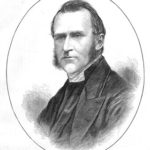by Roger E. Olson
I proudly consider myself an evangelical Christian theologian, but some commentators on evangelicalism probably do not consider me that. I recently wrote a chapter on the subject for a forthcoming edited volume on evangelicalism to be published in 2011 by Zondervan. There I argue that “evangelical” is an essentially contested concept without boundaries. In other words, contrary to many commentators, I do not believe “evangelical” is a bounded-set category.
Evangelicalism is a movement marked by certain common characteristics or family resemblances. Movements, by their very nature, cannot have boundaries. As soon as they have boundaries they are no longer movements but organizations. Movements are centered-set categories. Other examples from religion are “charismatic,” “New Age” and “fundamentalist.” These, like evangelicalism, have no headquarters, no magisterium (controlling authority) and no definite membership.
Religious groups with boundaries are, for example, the Roman Catholic Church (which has a controlling authority that can decide who’s in and who’s out), the Evangelical Theological Society (which has a definite membership list) and the Baptist General Convention of Texas (which I mention because I’m a member by virtue of my membership in one of its affiliate churches). These groups are not movements but organizations. The difference lies precisely in the presence of identifiable boundaries.
All the current controversy over “evangelical boundaries” annoys me because, by definition, there cannot be such. The Evangelical Theological Society and similar evangelical organizations such as the National Association of Evangelicals can talk about their boundaries, but people cannot meaningfully debate “evangelical boundaries” in general. They don’t exist.
So how can one identify an “evangelical?” That’s not easy. It’s ambiguous. Some well-intentioned but misguided folks are so uncomfortable with ambiguity that they want to pretend “evangelicalism” is an organization with boundaries and they use whatever influence they may have to try to persuade people with power (e.g., administrators of institutions of higher education and publishers) that they know where the boundaries of the movement lie. But they don’t because there can’t be such.
So what is “evangelicalism?” Simply put, it’s a religious movement, a spiritual movement, specifically a Christian movement made up of diverse people and groups all sharing some common concerns and commitments. But those are not boundaries because nobody has the authority to expel anyone from the movement and those common concerns and commitments are open to varying interpretations.
Here’s how I handle deciding whether someone or something (e.g., an institution or organization) is authentically evangelical. First, I realize that it is always a matter of degrees and not a black-or-white settled state of affairs. Second, if the person or group says they are evangelical I want to give them the benefit of the doubt. Third, if there is reason to doubt and it matters, I look to sociologists and historians for help.
Two people that I consider reliable guides are Mark Noll and David Bebbington; they are widely recognized scholars of the evangelical movement’s history and character. Noll and Bebbington have identified four common characteristics of evangelicals in general: biblicism (the Bible as divinely inspired and authoritative for life and thought), conversionism (authentic Christian existence begins with a personal decision to trust in Jesus Christ as Savior and Lord that involves repentance and faith), crucicentrism (cross-centered piety) and activism (commitment to change the world even if only one person at a time through evangelism and social action). These four characteristics form a common core – a center – that defines the evangelical movement and “family.”
However, they are not boundaries because they are relatively flexible and together set forth a portrait rather than a membership list. They express a rough consensus of a diverse group and not an exclusive club of uniformity. To me the evangelical movement is a large tent, to use a different metaphor, under which very diverse Christians gather to worship and witness. Sometimes fights break out and divisions happen. That’s unfortunate. We have more in common than separates us. And sometimes there’s someone under the tent that doesn’t really belong, but I’m reluctant to have “bouncers” to kick them out. There simply aren’t any; although, unfortunately, there are bullies who assign themselves that role.
I want to enjoy and celebrate our evangelical diversity while at the same time arguing loudly that as evangelicals we do have a historical consensus about certain matters of spiritual and theological concern. I enjoy the fact that my evangelical family includes high church Episcopalians and low church Friends (Quakers), tongues-speaking Pentecostals and cessationist, fundamentalist Baptists who eschew the supernatural gifts of the Spirit, Calvinists and Arminians, and even a few so-called heretics who serve to remind us to keep studying Scripture and our history to discover truth which I consider a never-ending journey rather than a fortress to be defended.
This post originates from Roger E. Olson.com






Leave a Reply